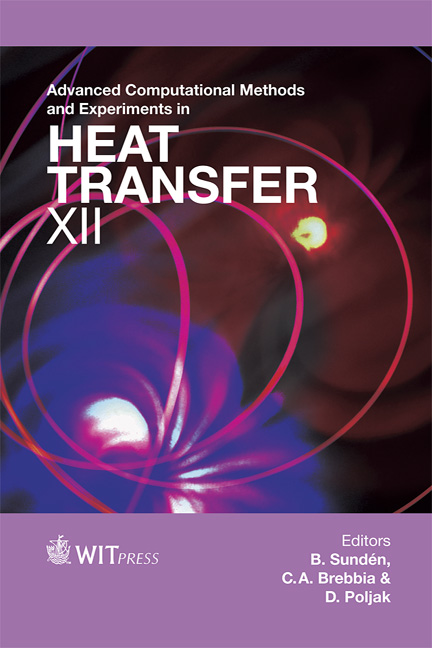Three-dimensional Boundary Element Method Model In The Frequency Domain For Simulating Dynamic Heat Conduction
Price
Free (open access)
Transaction
Volume
75
Pages
12
Page Range
97 - 108
Published
2012
Size
764 kb
Paper DOI
10.2495/HT120091
Copyright
WIT Press
Author(s)
J. Prata, A. Tadeu & N. Simões
Abstract
The boundary element method (BEM) is a suitable numerical method used to study heat diffusion by conduction, which only requires the discretization of the boundary of the material discontinuities. However, one of the biggest challenges to this technique is the integration of mathematical singularities. In this work the BEM is used to simulate the heat conduction in the vicinity of 3D inclusions, when heated by dynamic heat point sources. Continuity of temperatures and heat fluxes are prescribed along the boundary interfaces. All boundary interfaces are discretized using constant elements. The proposed algorithm is verified by means of known analytical solutions for cylindrical inclusions. Keywords: heat conduction, three-dimensional sources, three-dimensional boundary element method, singular integrals. 1 Introduction The study of heat transfer has been increasingly important in many branches of engineering. Numerous works have been published proposing different models, based on both analytical [1] and numerical analysis, to study heat diffusion through different systems and materials. Different approaches could be taken into account in a numerical analysis, depending whether the numerical method is based on domain-discretization such as finite elements (FEM) [2] and finite differences (FDM) [3, 4] or on boundary discretization such as the boundary element method (BEM) [5, 6] . More recently, some researchers have been focused on the development of meshless methods to study physical phenomenon
Keywords
heat conduction, three-dimensional sources, three-dimensional boundary element method, singular integrals.





